After a previous post of Henry Moore’s shelter drawings I wanted to move on to his series of the Family Unit. The shelter drawings were met with a wave of public success as they captured the public’s imagination of hardship without conflict. The drawings were on show at the National Gallery while the gallery’s permanent works were relocated into air-conditioned huts in caves.
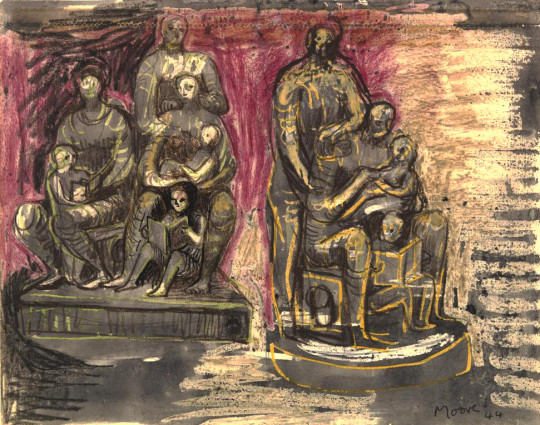
Henry Moore – Family Groups, 1944
The Government used the now empty National Gallery for lunchtime concerts of music and displaying the work of War Artists. So the public where being introduced to modern art by Government patronage.
The Family unit works feel like perhaps a natural progression of the shelter themes, the drawing is in that new style of wax and watercolour. Moore abstracted forms down to crash-test-dummy basics. Draped in fabric it was this period of his work that defined the styles he would continue for the rest of his life. Before the war his work being more abstract and less figurative.
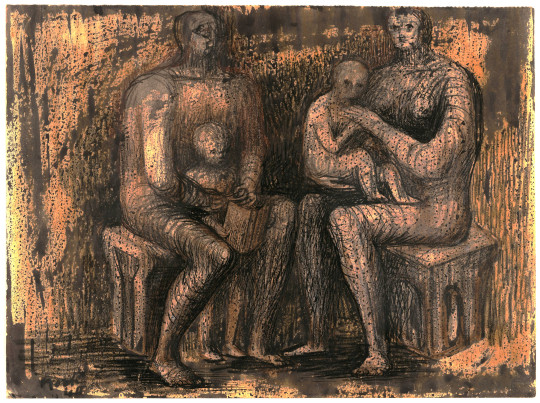
Henry Moore – Family Group, 1944
The works date from 1948-1950 though due to chaotic recording of dates and sketches on Moore’s behalf (pages cut out for sale, for exhibitions, etc) some of the works may have started in 1943. The bulk of the work came from a commission from Henry Morris for a sculpture, this acted as a catalyst for the theme and the work in the sketchbooks.
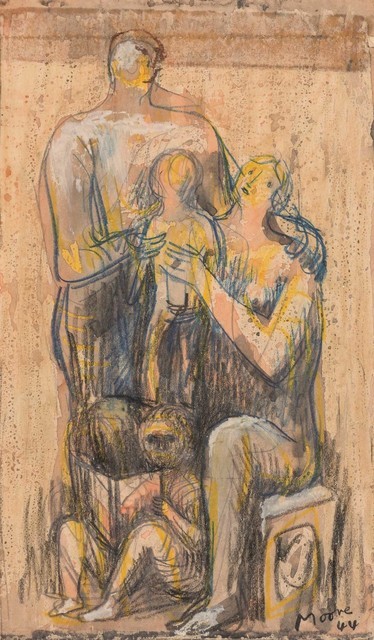
Henry Moore – Family Group, 1944
The educationalist Henry Morris asked Moore for a sculpture to be placed in the grounds of a proposed village college in Impington, Cambridgeshire. It was to be the first Village College in the Britain. Moore later wrote:
’The Family Group in all its differing forms sprang from my absorbing [Morris’s] idea of the village college – that it should be an institution which could provide for the family unit at all its stages.‘ †
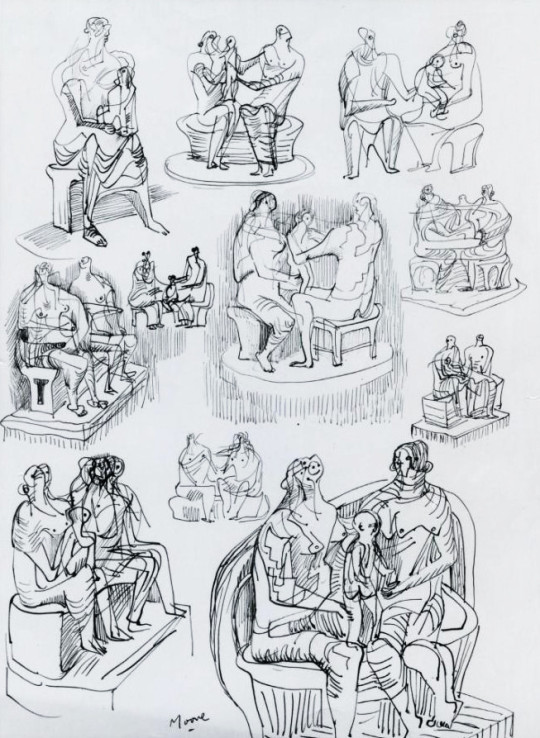
Henry Moore – Studies for Family Groups, 1944
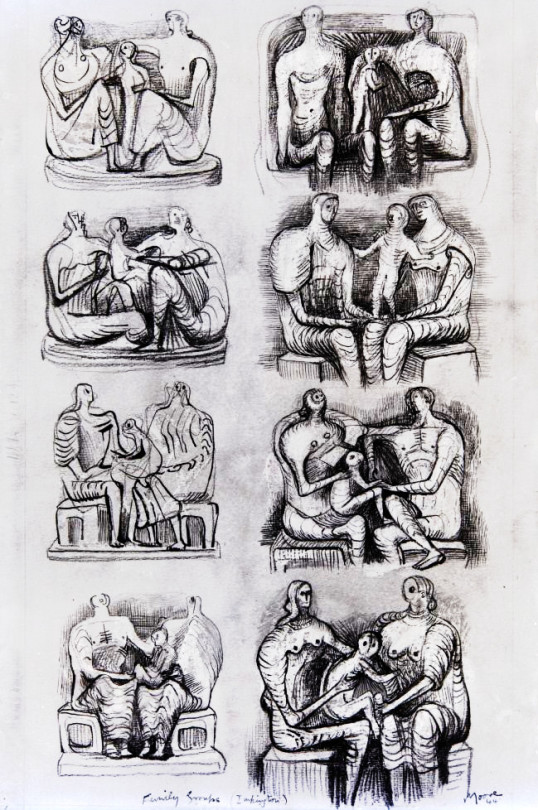
Henry Moore – Studies for Family Groups, 1944
The picture above has a notation ‘Family Group (Impington)’. Below are a series of maquette studies for the sculpture.
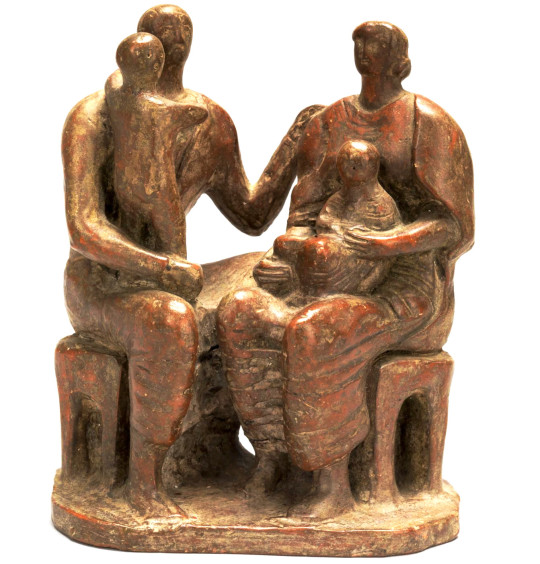
Henry Moore – Maquette for Family Group, 1944
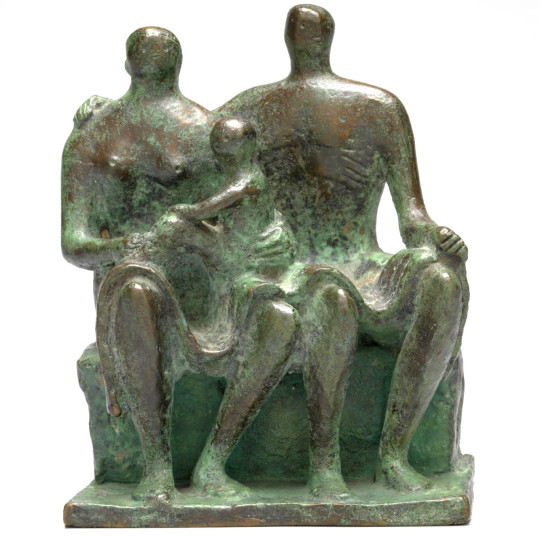
Henry Moore – Maquette for Family Group, 1944
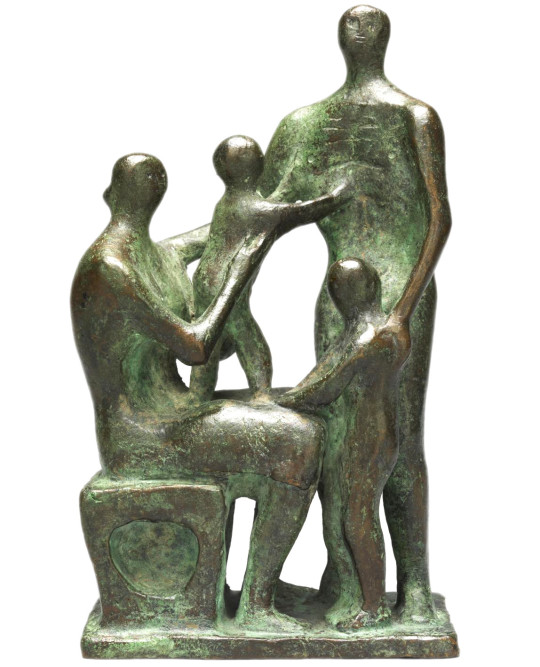
Henry Moore, Family Group, ca. 1943-1944
Between the commission of the sculpture and the reality of it, Cambridge Council got colder feet about the projected costs. They had started a program of building more Village College Schools all over the county and filling them with art from the Pictures for Schools series too. Cambridge was a county with money but they were spending it quickly. In the end Henry Moore sold the sculpture to Hertfordshire Council Council, who like Cambridge sold off their pictures for Schools. Cambridge didn’t have any sculptures to retain but Hertfordshire kept their sculpture and only sold off the framed works.
The commission was delayed and finally refused due to lack of funds, but a cast of the resulting Family Group 1948-49 was installed at Barclay School, Stevenage, in 1950. †
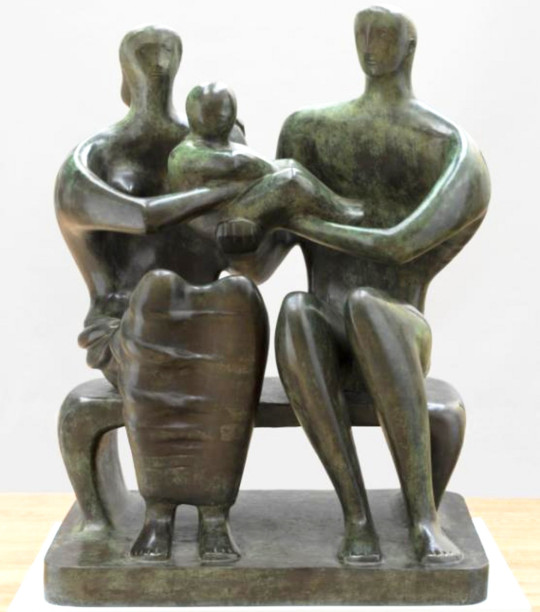
Henry Moore – Family Group, 1949 cast 1950-1
One great regret for Morris was his failure to acquire a sculpture by Henry Moore for Impington. Moore at that time was not a fashionable artist; the general public found his work shocking. Morris went to see him; they discussed the idea of the village college and Moore agreed to attempt a major sculpture which would stand in front of Gropius’s Impington. †
First a maquette was sent to Morris, who was eager to have it executed; but for the Cambridge county councillors of the time, Moore, and the price asked, were too much. They refused to order it. Two years later, Henry’s adoptive county of Herefordshire commissioned the piece. ‡
John Newsom, Hertfordshire’s imaginative county education officer, was an admirer of Henry Morris and knew that Moore still had the models for the Impington project up his sleeve. †
The Family Group above was Moore’s first larger scale bronze sculpture. Now based in Stevenage, the piece has been seen as symbolising aspects of the values of the post-war era of austerity and reconstruction.
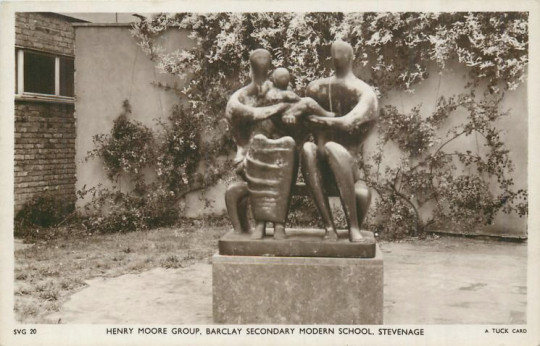
Postcard of the statue in situ.

Grouping outside Harlow Church
When the work was produced Henry Moore made a few more drawings of the Family Group, I would guess to sell on the back of the publicity. There was also a Penguin Print of the sculpture too at the same time in 1948.
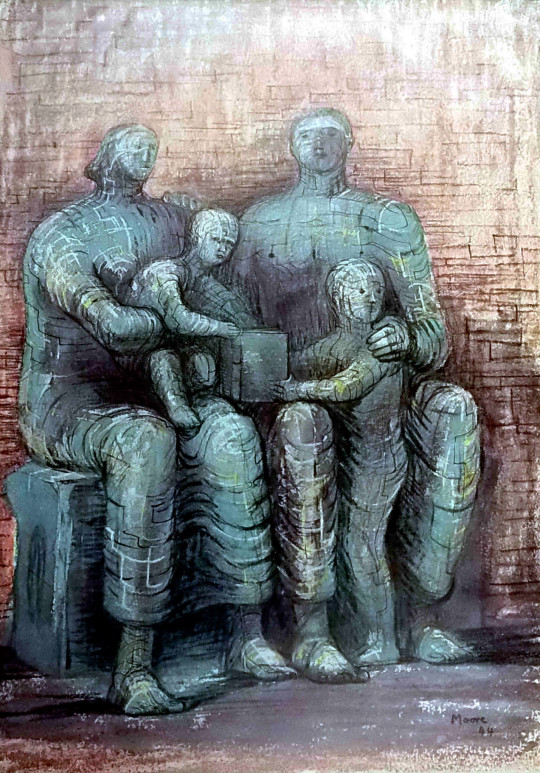
Henry Moore – Family Group, 1948. A Penguin Print.
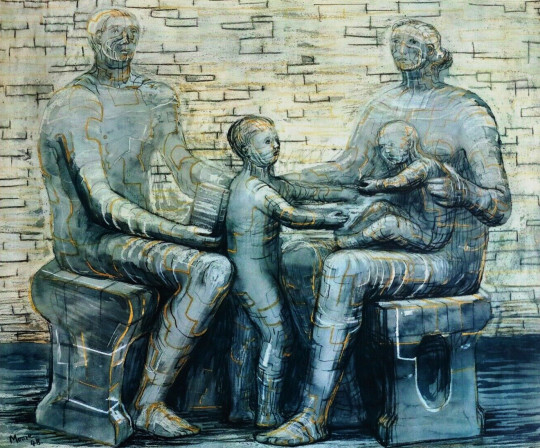
Henry Moore “Family Group” 1948
† Harry Ree – Educator Extraordinary, 1973, p72
‡ Roger Berthoud – The Life of Henry Moore, 1987 p223